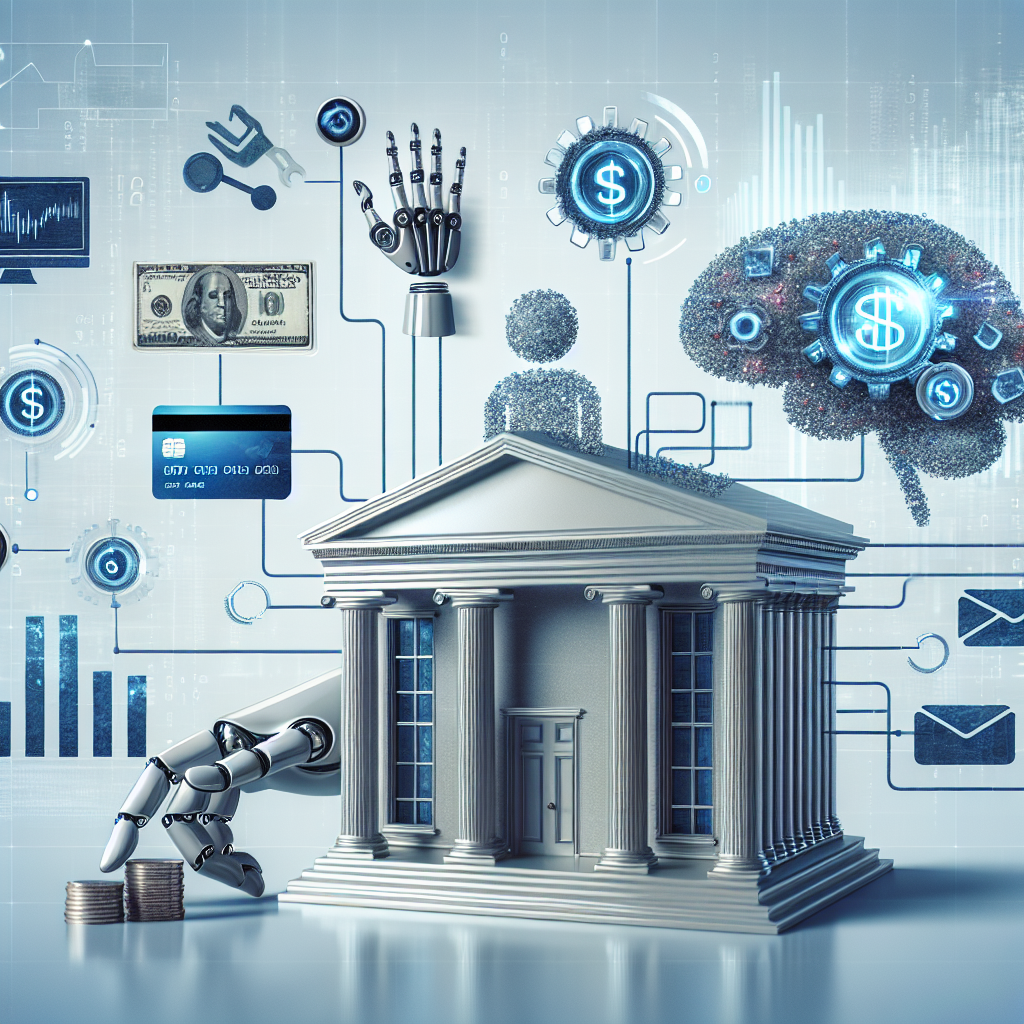Artificial Intelligence (AI) has transformed the way businesses operate across various industries, and banking is no exception. AI-powered predictive analytics in banking has become a game-changer in driving better decision-making, improving customer experiences, and increasing operational efficiency. In this article, we will explore how AI-powered predictive analytics is revolutionizing the banking sector and how it is enabling banks to stay ahead of the curve.
What is AI-Powered Predictive Analytics in Banking?
AI-powered predictive analytics in banking is the use of AI algorithms and machine learning models to analyze historical data, identify patterns, and make predictions about future events or trends. This technology helps banks to forecast customer behavior, detect fraudulent activities, optimize marketing campaigns, and improve risk management strategies.
By leveraging AI-powered predictive analytics, banks can gain valuable insights into their customers’ preferences, behaviors, and needs. This enables them to offer personalized products and services, enhance customer engagement, and increase customer satisfaction. Additionally, AI-powered predictive analytics helps banks to identify potential risks and opportunities in real-time, enabling them to make informed decisions quickly and effectively.
How AI-Powered Predictive Analytics is Driving Better Decision-Making in Banking
1. Customer Segmentation and Personalization: AI-powered predictive analytics helps banks to segment their customers based on their behavior, preferences, and needs. By understanding each customer segment’s characteristics, banks can tailor their products and services to meet their specific requirements. This personalized approach enhances customer satisfaction and loyalty, driving better decision-making in terms of product development, marketing strategies, and customer engagement.
2. Fraud Detection and Prevention: AI-powered predictive analytics plays a crucial role in detecting and preventing fraudulent activities in banking. By analyzing historical transaction data and identifying suspicious patterns, AI algorithms can flag potential fraud in real-time. This proactive approach helps banks to mitigate risks, protect their customers’ assets, and maintain trust and confidence in their services.
3. Credit Risk Assessment: AI-powered predictive analytics is instrumental in assessing credit risk in banking. By analyzing customers’ credit history, financial behavior, and other relevant factors, AI algorithms can predict their likelihood of defaulting on loans or credit obligations. This enables banks to make informed decisions about lending, setting interest rates, and managing their credit portfolios effectively.
4. Marketing Campaign Optimization: AI-powered predictive analytics helps banks to optimize their marketing campaigns by identifying the most effective channels, messages, and timing to reach their target audience. By analyzing customer data and predicting their responses to marketing initiatives, banks can tailor their campaigns for maximum impact and ROI. This data-driven approach enhances decision-making in marketing strategy, budget allocation, and customer acquisition efforts.
5. Operational Efficiency and Cost Reduction: AI-powered predictive analytics enables banks to streamline their operations, automate repetitive tasks, and reduce operational costs. By analyzing data patterns and predicting operational bottlenecks, AI algorithms can optimize processes, improve workflow efficiency, and enhance resource allocation. This results in better decision-making in resource management, process optimization, and overall operational performance.
FAQs:
1. What are the key benefits of AI-powered predictive analytics in banking?
AI-powered predictive analytics in banking offers several key benefits, including improved decision-making, enhanced customer experiences, increased operational efficiency, fraud detection and prevention, and personalized products and services. This technology enables banks to gain valuable insights into their customers’ behavior, preferences, and needs, helping them to make informed decisions, drive customer engagement, and stay ahead of the competition.
2. How can banks leverage AI-powered predictive analytics to enhance customer experiences?
Banks can leverage AI-powered predictive analytics to enhance customer experiences by offering personalized products and services, optimizing marketing campaigns, and improving customer engagement. By analyzing customer data and predicting their preferences and behaviors, banks can tailor their offerings to meet their specific needs, increasing customer satisfaction and loyalty. This personalized approach helps banks to build stronger relationships with their customers, drive revenue growth, and differentiate themselves in the market.
3. How does AI-powered predictive analytics help banks to detect and prevent fraud?
AI-powered predictive analytics helps banks to detect and prevent fraud by analyzing historical transaction data, identifying suspicious patterns, and flagging potential fraud in real-time. By using AI algorithms to predict fraudulent activities, banks can take proactive measures to mitigate risks, protect their customers’ assets, and maintain trust and confidence in their services. This data-driven approach enables banks to stay ahead of fraudsters, reduce financial losses, and safeguard their reputation in the market.
4. How can banks use AI-powered predictive analytics to optimize their credit risk assessment?
Banks can use AI-powered predictive analytics to optimize their credit risk assessment by analyzing customers’ credit history, financial behavior, and other relevant factors. By predicting customers’ likelihood of defaulting on loans or credit obligations, AI algorithms help banks to make informed decisions about lending, setting interest rates, and managing their credit portfolios effectively. This data-driven approach enables banks to assess credit risk more accurately, minimize losses, and improve their overall risk management strategies.
5. How does AI-powered predictive analytics help banks to streamline their operations and reduce costs?
AI-powered predictive analytics helps banks to streamline their operations and reduce costs by analyzing data patterns, predicting operational bottlenecks, and optimizing processes. By automating repetitive tasks, improving workflow efficiency, and enhancing resource allocation, AI algorithms enable banks to achieve operational excellence, drive cost savings, and improve overall performance. This technology empowers banks to make data-driven decisions, optimize their operations, and stay competitive in the rapidly evolving banking landscape.
In conclusion, AI-powered predictive analytics is revolutionizing the banking sector by driving better decision-making, enhancing customer experiences, and increasing operational efficiency. By leveraging AI algorithms and machine learning models, banks can gain valuable insights into their customers’ behavior, preferences, and needs, enabling them to make informed decisions, mitigate risks, and stay ahead of the competition. As AI technology continues to evolve, banks that embrace predictive analytics will be better positioned to succeed in the digital age and meet the ever-changing needs of their customers.

